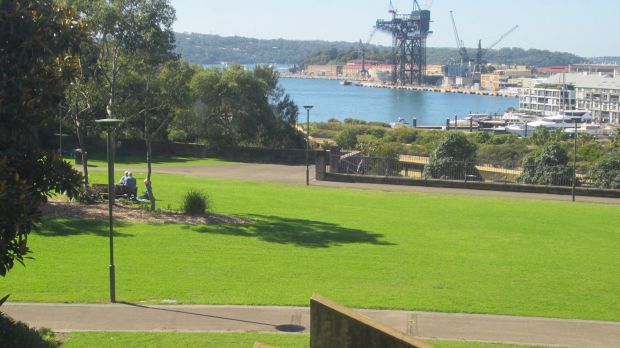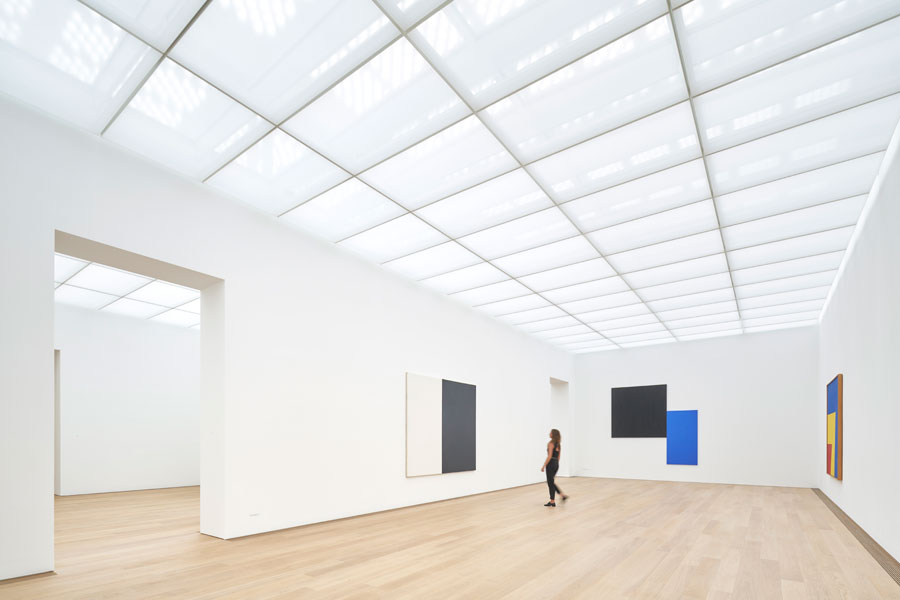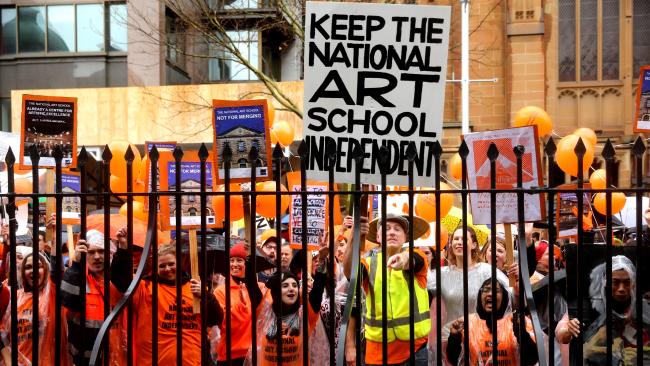Welcome to 2018! It’s certain to be a year of battles for appropriate funding and resources to support public institutions, schools and colleges, and the communities they serve.
Just before Christmas, while most people’s attention was on shopping or packing, two developments spelt trouble ahead for the NSW Coalition Government’s “cultural infrastructure” plans. And they highlighted the failure of both major political parties in Australia to put forward a coherent cultural policy.
On 15 December submissions closed concerning the Development Application (DA) for the Sydney Modern Project at the Art Gallery of NSW. Published on the Department of Planning website, the submissions are overwhelmingly objections, numbering many more than the 25 required for the project to be referred for further assessment. They include some thoroughly researched, closely argued documents from leading professionals in architecture, urban planning, environment and museum management. So compelling are these documents that they give the lie, irrefutably, to AGNSW management’s argument that opponents of the grandiose expansion are either malcontents or stick-in-the-muds. More on this below.
Then on 18 December the Upper House Inquiry into Museums and Galleries delivered its interim report, concerned principally with the proposed relocation of the Powerhouse from Ultimo to Parramatta. Pointing to the steep rise in the likely cost from that originally suggested, it stated that “spending up to $1.5 billion to destroy a cultural icon is an act of vandalism by this government”.
The committee’s concerns included the lack of policy for the regions, and the absence of any dedicated Aboriginal museum. The report expressed disappointment that both Premier Gladys Berejiklian and her predecessor Mike Baird had declined invitations to attend hearings.

“The committee,” the report said, “is appalled that the decision to relocate the Powerhouse Museum was publicly announced before a preliminary business case had even been prepared for Cabinet. The credibility of the relocation decision has been undermined by the lack of genuine community and sector consultation undertaken in relation to the proposed move, and by the secrecy surrounding the funding, relocation costs and business case itself.”
Secrecy, cost overruns and a lack of genuine consultation? Sounds familiar. They have become hallmarks of the modus operandi of the Berejiklian government’s infrastructure spend.
Top professionals object to Sydney Modern
Following the objection to the Sydney Modern DA submitted by the Chesterman, Andrews, Appleton and Donald group, reported here on 14 December, I have received copies of two further highly professional documents which the authors are happy to share.
Widely respected museum and heritage consultant Kylie Winkworth, who also gave evidence to the Upper House inquiry concerning the Powerhouse, brings to the issue a wealth of knowledge of art gallery practice internationally. She is concerned about the project’s intrusion into the Royal Botanic Garden (RBG) and what she terms its inappropriate design. Answering the argument that Sydney Modern would contribute to making Sydney a “global city”, she points out that “global cities defend their public parkland from encroachment and development”, noting that New York has prevented the Metropolitan Museum from building further into Central Park.

View of The Domain from the north side of the present Gallery
She discusses in detail alternative sites for a gallery expansion, stressing that “this is not a choice between developing a new gallery or preserving the parklands of the RBG&D”, and showing that the trend in major world cities is towards satellites of the kind pioneered by the Tate in the UK. Parramatta would be an ideal location. She demonstrates that in Sydney, the Botanic Garden is a bigger tourist attraction than the AGNSW is planned to be even if it gets its extension; and she points out that between the Museum of Contemporary Art (MCA) and Carriageworks in the inner west, the city already has good spaces for the display of contemporary art.
It’s an eloquent document, but perhaps its most compelling section concerns “Cultural Infrastructure Policy and Priorities”. Winkworth writes: “The Sydney Modern project is being developed in a cultural policy vacuum… What passes for policy is a list of capital works projects.” Museums, she writes, need rethinking “to maximise the impact and returns from the community’s investment in museums and collections for all the residents of NSW” (emphasis in the original).
Even for Sydney itself, the government’s current choices seem to be all wrong. A 2011 report entitled Planning Sydney’s Cultural Facilities identified priorities including an indigenous cultural centre, a social history museum and a major design exhibition space – none of which has been addressed to date. “Spending scarce cultural infrastructure funds before basic cultural policy and planning,” Winkworth continues, “is like pouring concrete for a motorway without knowing where it’s going, why it is needed and who will use it”. A NSW government would never do that – would it?
My own objections to Sydney Modern grew out of what I perceived, from close observation, to be a distortion in the principal role of the AGNSW and a move towards corporatisation. More recently I have come to appreciate the concerns put forward by others on environmental and architectural grounds. So far as architecture goes, I have encountered no more persuasive voice than that of Andrew Andersons, architect of the Gallery’s two previous, successful extensions, the Captain Cook and Bicentennial wings.
In May last year Andersons wrote to the Sydney Modern project team outlining problems with the architectural competition and the winning design by Tokyo firm SANAA. Since his points were largely ignored, he has now made an extensive submission about the DA arguing that the architectural quality of the design, together with its impact on The Domain, do not justify approval of the project.

Shedding light: the Museum Voorlinden, Netherlands, is an example of good daylighting
There is, he writes, “no evidence of the design philosophy behind the tilting ground, floor and roof plans”. His submission is very detailed, well illustrated and convincing. Among the points he highlights: There is no top-lit daylighting, which is considered best practice internationally for art galleries; there is little or no shade or shelter in open areas, including the entry plaza, and the glass ceiling-to-floor panels (presumably to maximise “harbour views”) will need shading in the Sydney climate. There is no “dialogue” between the new building and the existing one, with its fine neoclassical façade, and the impact of increased traffic on the already overstretched approaches to The Domain would only be negative.
Andersons is at pains to make his criticism constructive, going so far as to suggest some design amelioration, for which he provides drawings. But his conclusion is that Sydney would be better served by locating the AGNSW extension in The Cutaway at Headland Park, Barangaroo. In the immediate term he proposes that the SANAA design be submitted for peer review by three gold medal winners nominated by the Institute of Architects, and it’s hard to disagree.
Both Kylie Winkworth’s submission and Andrew Andersons’s will be published in due course, along with others, on the Department of Planning website. The documents are too large to include in this article but I have the authors’ permission to circulate them, so please email judith@cultureheist.com.au if you would like a copy.
Politics of power-broking
In December the NSW Opposition leader Luke Foley, speaking about the $2.3 billion plan to rebuild Sydney’s three main sports stadiums, said that Premier Gladys Berejiklian “has bent the knee to relentless lobbying by unelected powerbrokers”. He was referring to the wealthy and influential men on the board of the Sydney Cricket and Sports Ground Trust, who include broadcaster Alan Jones and former Transfield chair Tony Shepherd.
When will Mr Foley draw the same conclusion about the boards of cultural institutions and business chamber lobby groups, and take a firm stand on arts policy?
It’s just over a year to the next NSW State election, in March 2019. A party serious about winning that election should think long and hard about the “cultural infrastructure” headaches they stand to inherit from the Coalition.
So there is some concern about an item in the interim report of the Upper House Inquiry into Museums and Galleries. Tucked away in the appendixes, but spotted by keen-eyed members of the Powerhouse Museum Alliance, are the minutes of the committee for 14 December, when the report was finalised. A draft was presented by committee chair Robert Borsak MLC of the Shooters and Fishers Party. Among the amendments was the following from Walt Secord of the ALP, shadow Minister for the Arts and Deputy Leader of the Opposition in the Legislative Council. It’s quoted here from the minutes:
“Mr Secord moved: That Recommendation 4 be omitted: ‘That the NSW Government retain the Powerhouse Museum at its existing site in Ultimo’ and the following new recommendation be inserted instead: ‘That the NSW Government release the full business case for the Powerhouse Museum and all assessed proposals to the committee and the community for full public consultation before making its final decision.’ “
Everyone except Greens MLC David Shoebridge, who voted against, went along with the change, and the recommendation to leave the Powerhouse in Ultimo was dropped. Now, there’s no argument that the business case should be released, as the amendment proposes, but after all the evidence heard by the inquiry, it’s certainly not too soon to say that the Powerhouse should stay in Ultimo. Even in Western Sydney, most witnesses to the inquiry were against the move. One of the few still supporting it is David Borger, a former Parramatta mayor and former Labor MP for Granville, who is now the influential head of the Western Sydney division of the Sydney Business Chamber.
Secord entered the Upper House to fill the vacancy left when Eddie Obeid stepped down in disgrace following the hearings of the Independent Commission Against Corruption. For Labor to have any credibility in arts policy, he’ll have to stop playing politics with the State’s cultural institutions and start listening to the professionals. There’s as yet no sign that either side of politics is rushing to do that, but government is required to answer both the Upper House inquiry’s criticisms of the Powerhouse move, and the objections lodged with the Department of Planning about the Sydney Modern DA.
In the year to come, vigilant supporters of cultural institutions will be looking critically at their response, and at the arts policies of all political parties at both State and Federal levels. Governments can no longer get away with throwing money at vanity projects with one hand, while with the other they take money away from recurrent funding for institutions, arts organisations and public education. They will face a lively debate over cultural policy. To judge by the evidence from the public-spirited professionals who are speaking out in NSW, it promises to be a vigorous and much-needed discussion.
Happy New Year!





You guys are doing great work. Another area of concern to add to your growing list is the destruction of Thompson Square Windsor and the demolition of the 1874 old historic Windsor bridge built to a heavy rail construction standard by the mad crazy NSW Government and now even with the recent discovery of extremely rare convict built huge barrel drains the plans are still going ahead.
Only hope now is the Federal Minister Josh Frydenberg as the State Government will not listen to the community. Nothing new with them under Gladys for more information see http://www.cawb.com.au (CAWB). I believe there will be a rally at Thompson Square on Monday morning January 8th around 6am
Submission links are in 3 places on this webpage http://www.majorprojects.planning.nsw.gov.au/index.pl?action=view_job&job_id=6471. It is important to check what the other government departments have said or not said. Note the State Library has supported. RMS has failed to provide analysis of traffic impacts. OEH is substantial.
Secord ‘boasted’ previously that he was the first person to suggest moving the Powerhouse west when he was chief of staff to then premier Kristina Keneally. He just wants to play political football as Labor did with greyhounds. Check out Secord’s voting record.